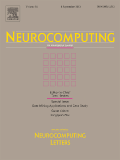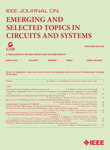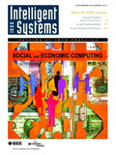
Neuromorphic Computing and Engineering
Scope & Guideline
Exploring the Future of Intelligent Systems
Introduction
Aims and Scopes
- Neuromorphic Hardware Development:
Research on the design and implementation of hardware systems that mimic the neural structure and function of biological brains, including memristors, synaptic devices, and photonic systems. - Algorithms and Architectures for Neuromorphic Systems:
Exploration of novel algorithms, architectures, and methodologies that leverage neuromorphic principles for efficient processing, learning, and information representation. - Integration of Biological Principles:
Studies that draw inspiration from biological neural networks and cognitive processes, aiming to replicate or model their functionalities in artificial systems. - Event-Driven and Spiking Neural Networks:
Focus on computational models that utilize event-driven processing and spiking neural networks, emphasizing real-time learning and adaptability. - Applications in Robotics and AI:
Application of neuromorphic computing principles to enhance robotic systems, artificial intelligence, and edge computing, promoting intelligent and autonomous behaviors. - Energy-Efficient Computing Solutions:
Research targeting the development of low-power, energy-efficient neuromorphic systems suitable for various applications, particularly in mobile and embedded environments.
Trending and Emerging
- Hybrid Neuromorphic Systems:
There is a growing interest in hybrid systems that combine various neuromorphic technologies, such as integrating optical and electronic components, to enhance computational capabilities and efficiency. - Bioinspired Learning Mechanisms:
Emerging research focuses on bioinspired learning mechanisms, including spiking neural networks that mimic biological learning processes, highlighting their potential for real-time adaptation and efficiency. - 2D Materials and Emerging Devices:
The use of two-dimensional materials in neuromorphic devices is becoming increasingly prominent, showcasing their unique properties for creating advanced synaptic and neuronal elements. - Event-Driven Processing Techniques:
Event-driven processing methodologies are trending, emphasizing real-time data processing and low-power operation, which aligns with the needs of modern AI applications. - Applications in Edge Computing and IoT:
Research is increasingly directed towards the application of neuromorphic computing in edge devices and IoT systems, focusing on efficient processing capabilities for on-device AI solutions. - Exploration of Non-Volatile Memory Technologies:
There is heightened interest in non-volatile memory technologies for neuromorphic computing, as they offer potential for enhanced data retention and energy efficiency in neural architectures.
Declining or Waning
- Traditional Neural Network Architectures:
The exploration of classical neural network architectures has decreased as researchers pivot towards more biologically inspired and neuromorphic models that offer enhanced efficiency and adaptability. - Purely Software-Based Neural Implementations:
There is a noticeable decline in research focused solely on software-based neural network implementations without hardware integration, as the field increasingly emphasizes the interplay between hardware and software. - Single-Domain Device Research:
Studies that focus exclusively on individual device types without considering integrated systems or multi-device architectures are waning, as the trend shifts towards holistic approaches that encompass complex interactions. - Generic Machine Learning Techniques:
Research employing generic machine learning techniques without a focus on neuromorphic principles is becoming less common, reflecting a shift in interest towards specialized methods that align with neuromorphic computing paradigms. - Theoretical Studies without Practical Application:
There is a decline in purely theoretical explorations of neuromorphic concepts without tangible experimental validation or practical application, as the field moves towards more applied research.
Similar Journals

Nature Electronics
Leading the Charge in Electronic ResearchNature Electronics is a premier journal in the field of Electrical and Electronic Engineering, published by NATURE PORTFOLIO. Established in 2018 and converging until 2024, it has swiftly positioned itself as a leading platform for groundbreaking research, holding a prestigious Q1 ranking in multiple categories including Electronic, Optical and Magnetic Materials, and Instrumentation according to the latest 2023 evaluations. The journal boasts an impressive Scopus ranking, securing the top position in Instrumentation and showcasing exceptional standings in both Electrical Engineering and Materials Science. With a commitment to disseminating high-quality research, Nature Electronics offers insightful access to the latest innovations and advancements in the electronics domain, making it an essential resource for researchers, professionals, and students alike. Engaging with this journal enables readers to stay at the forefront of technological progress and fosters discussion on the future of electronic materials and devices.

Neural Network World
Advancing Knowledge in Neural Networks and BeyondNeural Network World, published by the Academy of Sciences of the Czech Republic, Institute of Computer Science, is a preeminent journal dedicated to the fields of artificial intelligence, hardware and architecture, software engineering, and neuroscience. Since its inception in 1994, this journal has provided a platform for the dissemination of pioneering research and technical advancements in neural networks and their applications. Operating from the heart of Prague, this publication holds a Q4 quartile ranking across key categories, highlighting the growing interest and relevance in its multidisciplinary focus. Although it does not currently offer open access, its commitment to scholarly rigor ensures that readers engage with high-quality content, making it a valuable resource for researchers, professionals, and students alike. As the field evolves, Neural Network World serves as an essential forum for innovative ideas and critical discussions, reinforcing its significance in driving forward the future of technology and neuroscience.

JOURNAL OF COMPUTER SCIENCE AND TECHNOLOGY
Exploring Innovations in Computational Theory and PracticeJOURNAL OF COMPUTER SCIENCE AND TECHNOLOGY, published by Springer Singapore Pte Ltd, is a pivotal platform in the rapidly evolving realms of computer science and technology. With an ISSN of 1000-9000 and an E-ISSN of 1860-4749, this journal encompasses a diverse array of topics including computational theory, hardware and architecture, software engineering, and applications of computer science. Spanning over three decades from 1986 to 2024, it boasts an impressive standing within academic circles, ranking in the Q2 quartile across several key categories and achieving notable placement in Scopus metrics. Although this journal operates under a subscription-based model, it remains a crucial resource for researchers, professionals, and students seeking to advance their knowledge and contribute to discussions in computer science. The JOURNAL OF COMPUTER SCIENCE AND TECHNOLOGY is committed to fostering innovation and scholarly communication in the field, encouraging submissions that contribute substantive advancements in theory and application.

Jordan Journal of Electrical Engineering
Exploring the Frontiers of Energy SystemsJordan Journal of Electrical Engineering, published by TAFILA TECHNICAL UNIVERSITY (TTU) in Jordan, serves as a critical platform for disseminating groundbreaking research in the fields of electrical engineering, energy systems, and related disciplines. With an ISSN of 2409-9600 and an E-ISSN of 2409-9619, the journal is committed to promoting advancements in energy engineering, biomedical applications, control systems, and signal processing among others. Despite its recent establishment in 2023, it has been indexed in multiple categories within Scopus, receiving rankings that reflect its emerging role in the academic community. Researchers and professionals are encouraged to contribute and access cutting-edge articles through open access options, ensuring that knowledge is readily available to all interested parties. As the journal continues to grow, it aims to bridge gaps in knowledge and stimulate dialogue, thereby supporting innovation and practical applications in the engineering sector.

NEUROCOMPUTING
Transforming Insights into Intelligent SolutionsNEUROCOMPUTING is a premier academic journal published by ELSEVIER, specializing in the interdisciplinary fields of Artificial Intelligence, Cognitive Neuroscience, and Computer Science Applications. With an impressive impact factor and a Q1 ranking in its relevant categories for 2023, NEUROCOMPUTING is recognized as a leader in fostering innovative research and providing a platform for ground-breaking studies. The journal’s scope covers the convergence of neural computation and artificial intelligence, making it essential reading for researchers and professionals seeking to explore the latest advancements and applications in these dynamic fields. For those interested in the cutting-edge intersection of neuroscience and computational techniques, NEUROCOMPUTING offers a wealth of knowledge that significantly contributes to both theoretical and practical advancements. The journal is dedicated to publishing high-quality, peer-reviewed articles and is an invaluable resource for students and established scholars alike, looking to stay at the forefront of research trends.

International Journal of Unconventional Computing
Challenging Norms, Redefining ComputingThe International Journal of Unconventional Computing, published by OLD CITY PUBLISHING INC, is a pivotal platform for innovative research within the field of Computational Science. With a significant focus on unconventional computing methods, this journal aims to explore new paradigms and approaches that challenge traditional computational models. Launched in 2008 and running through 2024, it has established itself as a noteworthy publication in its domain, currently categorized in the Q3 quartile for Computer Science (miscellaneous). While it holds a Scopus rank of #143 out of 232 in General Computer Science, the journal continues to attract submissions from a diverse range of scholars—fostering a rich dialogue on cutting-edge developments. As an essential resource for researchers, students, and professionals eager to delve into pioneering computing techniques, this journal invites the global academic community to contribute and engage with its content. Access options vary, promoting flexibility for readers interested in exploring unconventional methodologies in computing.

IEEE Journal on Emerging and Selected Topics in Circuits and Systems
Transforming concepts into cutting-edge solutions.IEEE Journal on Emerging and Selected Topics in Circuits and Systems is a prestigious peer-reviewed journal published by the IEEE - Institute of Electrical and Electronics Engineers, aimed at advancing the field of electrical and electronic engineering. With its ISSN of 2156-3357 and E-ISSN of 2156-3365, this journal has established itself as a leader in the exploration of innovative concepts and applications within circuits and systems since its inception in 2011. It is recognized for its high impact factor, being categorized in the Q1 Quartile for electrical engineering in 2023, and is ranked 126 out of 797 journals in the field, placing it in the 84th percentile according to Scopus rankings. As a valuable resource for researchers, professionals, and students alike, the journal focuses on emerging technologies and selected topics that contribute to the evolution of circuit designs, signal processing, and system architecture. Although it does not offer open access, the relevance and content of the journal ensure it remains at the forefront of electrical engineering discourse, continually fostering innovation and knowledge dissemination among the scientific community.

ACM Transactions on Parallel Computing
Shaping the Future of Computational ExcellenceACM Transactions on Parallel Computing (ISSN: 2329-4949; E-ISSN: 2329-4957), published by the Association for Computing Machinery, stands as a pivotal journal in the field of computer science, particularly focusing on the advancements in parallel and distributed computing. With its convergence years spanning from 2014 to 2024, this journal serves as a significant platform for disseminating cutting-edge research, methodologies, and technologies that shape the future of computational theory, hardware architectures, and effective software solutions. Although it currently holds a Q3 category ranking in various subfields including Computational Theory and Mathematics, and Modeling and Simulation, it continues to attract researchers aiming to contribute to its growing impact in the field. The journal's commitment to fostering knowledge exchange makes it an essential resource for professionals and students eager to navigate the complexities of parallel computing. As the field evolves, ACM Transactions on Parallel Computing remains a critical reference point for innovative research and professional development in computer science.

IEEE INTELLIGENT SYSTEMS
Unleashing Potential in Computer Networks and AIIEEE Intelligent Systems, published by the renowned IEEE Computer Society, stands at the forefront of research in the fields of Artificial Intelligence and Computer Networks and Communications. With an impressive Q1 ranking in both categories as of 2023 and Scopus rankings placing it in the top 5% of its field, this journal not only showcases cutting-edge scientific advancements but also serves as a vital resource for practitioners, academics, and students seeking to deepen their understanding and application of intelligent systems. The journal covers a broad range of topics including machine learning, data mining, and system architectures, reflecting its commitment to addressing contemporary challenges and innovations in technology. Although it does not offer open access, the journal's research contributions are invaluable, ensuring that its readership remains engaged with the latest findings and applications in a rapidly evolving field. For those interested in submitting high-quality research or staying updated on the latest developments, IEEE Intelligent Systems represents an essential hub of knowledge.

NEURAL COMPUTING & APPLICATIONS
Exploring Innovative Solutions in Neural ComputingNEURAL COMPUTING & APPLICATIONS is a premier journal dedicated to the burgeoning fields of Artificial Intelligence and Software Engineering, published by Springer London Ltd. Established in 1993, the journal serves as a pivotal platform for disseminating cutting-edge research and innovative applications in neural computing, covering a broad range of topics from algorithm development to real-world applications. With its impressive categorization in the 2023 Journal Quartiles—ranging Q2 in Artificial Intelligence and Q1 in Software—it stands out in its discipline, ranking 42nd out of 407 in Computer Science Software and 50th out of 350 in Computer Science Artificial Intelligence, reflecting its significant impact in the academic community. Although not an open access journal, it provides vital access to significant findings and methodologies that drive advancements in technology. Researchers, professionals, and students looking to stay abreast of the most relevant and impactful developments in these fields will find NEURAL COMPUTING & APPLICATIONS an indispensable resource.